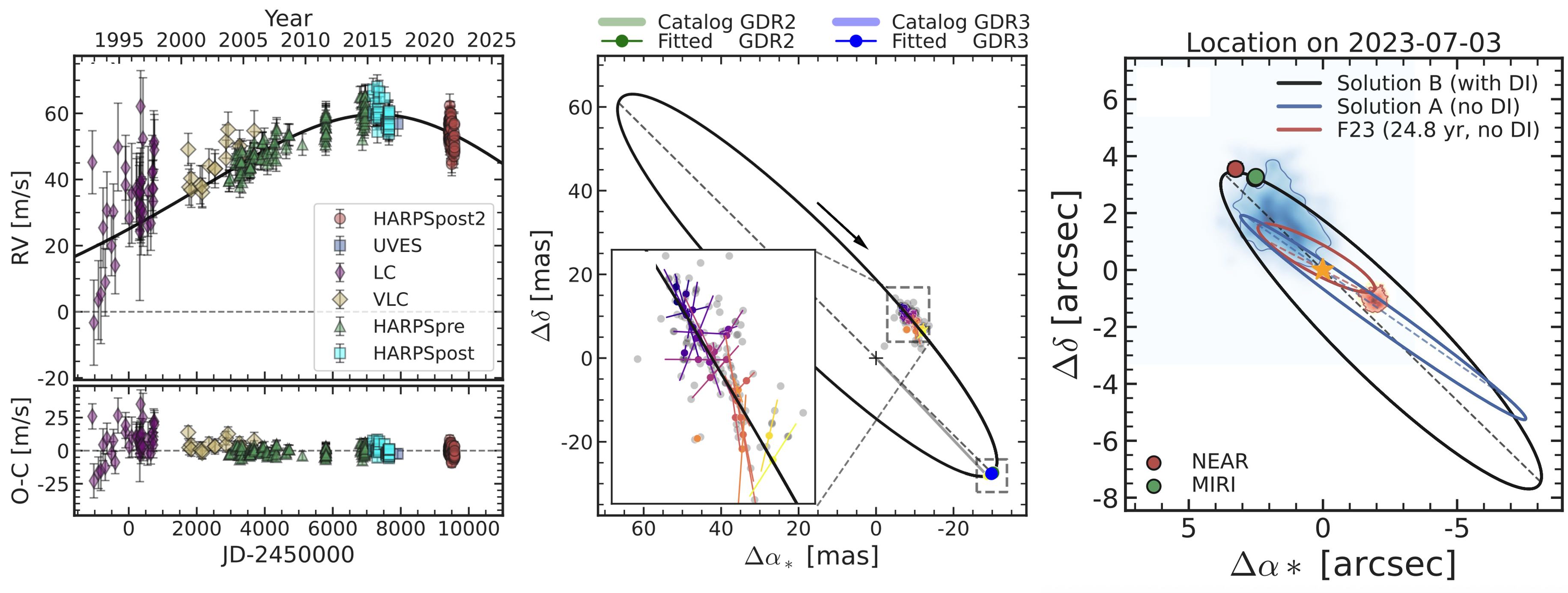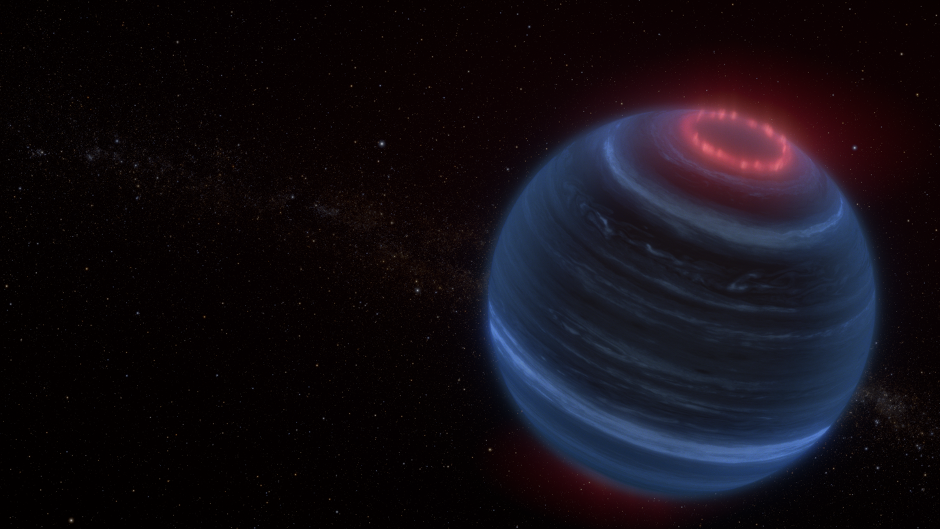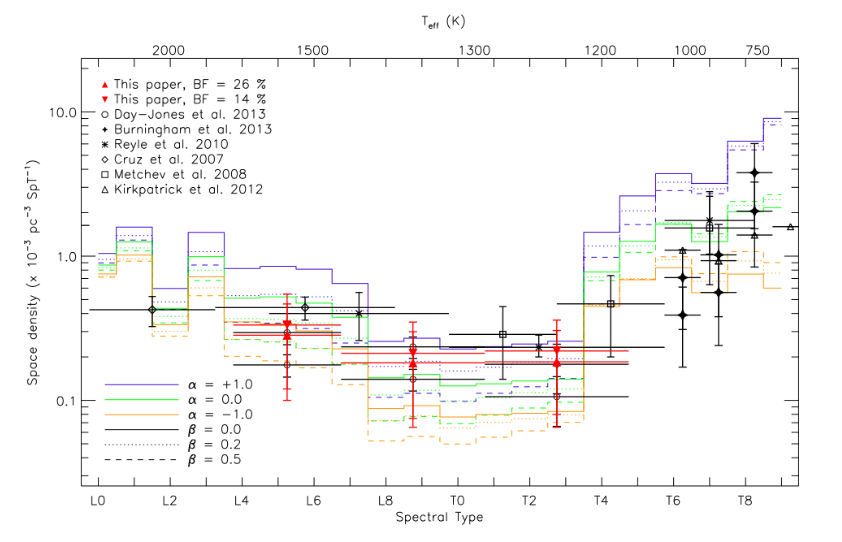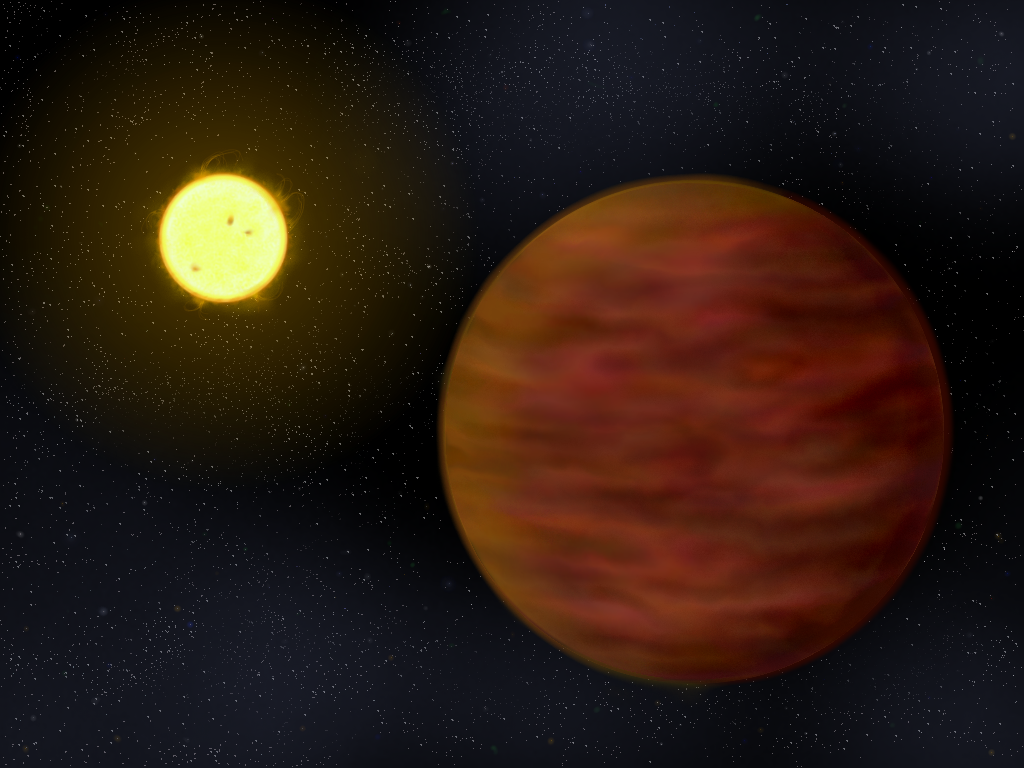Extrasolar Planets and Brown Dwarfs
(Burningham, Jones, Lucas, Martin, Pinfield)
We lead a wide range of programmes to detect and characterise brown dwarfs and extrasolar planets. Over the past 20 years we have discovered a variety of brown dwarfs with unusual properties and at times our group has held the record for the coolest known brown dwarf. Our group has also played a leading role in discovering nearby extrasolar planets, including finding the closest and most eccentric examples. Our current projects include: the detection and follow-up of brown dwarfs from the WISE, VISTA, DES, UKIDSS and PanSTARRS surveys, full exploitation of Gaia to characterise unusual brown dwarf benchmark systems, spectral analysis using atmospheric retrieval codes and Bayesian modelling of radial velocities to find multiple exoplanet systems. We have a variety of scientific objectives; a proper understanding of ultracool atmospheres (spanning the brown dwarf and giant planet regime), a full characterisation of Galactic brown dwarf populations (mass function, birth-rate, multiplicity and kinematics), and the discovery and characterisation of the full range of multiple planet systems and Earth analogues around different types of star.
Radial Velocity Planet Searches
Three decades after the first discovery of a planet with the Doppler spectroscopy method, the signals of few-Earth-mass super-Earths can be routinely extracted from the stellar spectra with careful calibration, reprocessing, and statistical analysis of the resulting velocities in a search for periodic planetary fingerprints. In the last 20 years, the instrumental precision has been improved from 10 m/s to 1 m/s that enables the detection of not only Jupiter-size planets, but also Neptune-size and even smaller planets orbiting nearby Sun-like stars. Yet, the detection of another Earth-like planet remains elusive - this is because the current precision has to be improved by another factor of ten. And this is problematic - stellar surface inhomogeneities (spots and other active/inactive regions) combine with rotation and activity cycles to produces a non-white noise-floor of order 1 m/s preventing the detections of signals smaller than that in amplitude. However, modelling the resulting aperiodic and quasi-periodic behaviour with sufficiently flexible yet physically motivated statistical models can enable the detections of signals of other Earth-like planets.
We have developed such models and used them to detect a number of potentially habitable super-Earths orbiting nearby stars. This includes evidence for a system of small planets orbiting the nearby Solar analogue Tau Ceti, the nearest Sun-like star beyond the solar system, and several planets orbiting Proxima Centauri the nearest star to our own sun.
Some of the most interesting long-period radial velocity signals can be found in the astrometric data of Gaia. For example, Epsilon Indi A has a clear long period signal which we have found in radial velocity and astrometric data and have followed up with imaging on the VLT and JWST to establish a companion of around 6 Jupiter masses and a temperature of 275K.

Atmospheres of brown dwarfs and giant exoplanets
We develop remote sensing techniques for exploring the atmospheres of giant exoplanets, brown dwarfs and other planetary mass objects, collectively known as substellar objects. We use data from a variety of sources both ground- and space-based. In particular, the James Webb Space Telescope has revolutionised this work, and projects using Webb data currently dominate our work. Free-floating brown dwarfs and planetary mass objects are much easier to observe than giant exoplanets that usually appear very close to their stars and require careful observation and data processing to remove the influence of the starlight. As a result, exoplanets often have much lower quality data than directly observable brown dwarfs.
We use high-quality spectroscopy of the light emitted from our targets to determine the thermal structure, chemistry and cloud properties of their atmospheres. This information is crucial for testing the complex models of giant planetary atmospheres that are needed for interpreting the less rich data sets that are available for such objects. It also allows us to learn about their composition which is essential for understanding their formation.
We are also very interested in studying the weather in substellar atmospheres, via timeseries data that shows how their spectra vary in time as the objects rotate. Such data can reveal changing cloud cover as the objects rotate, and also perhaps changes in chemistry and thermal structure.
The brown dwarfs we study cover the entire temperature range of the giant exoplanets that have discovered, from quite hot (1500 – 2000K) worlds with clouds made of iron, quartz, and other silicate minerals, down to temperatures where clouds of water-ice are expected to be condensing in the atmosphere (<500K). Recent highlights include the first detection of quartz clouds in a substellar atmosphere (Burningham et al. 2021), the characterisation of patchy mineral clouds in the atmospheres of two young planetary mass worlds (Vos, Burningham+ 2023), and the discovery of a methane emission attributed to aurorae in the atmosphere of cold isolated brown dwarf (Faherty, Burningham et al., 2024).

Brown dwarfs in large-scale surveys
The group builds on an established heritage of mining large-scale surveys for brown dwarfs, hunting for the coolest and closest examples and studying large populations to better understand the sub-stellar initial mass function and birth-rate history, and the physics of the coolest atmospheres. We previously studied L dwarfs and the latest T dwarfs in UKIDSS, and now search DES, EUCLID, SPHEREx, VISTA and WISE surveys for Y dwarfs (Teff<500K) and rare T dwarfs from older kinematic populations.
We were the first to identify an unexpected dearth in mid- to late-T dwarf numbers (compared to expectations from open cluster populations), that is either high-lighting problems with the latest evolutionary models or resulting from a varying initial mass function. We also found the observed density of LT transition objects to be a factor ~2 above expectation, suggesting the unresolved binary fraction may be higher than expected across the transition. We have discovered an unusual Y0 dwarf showing peculiar spectral morphology. We have also identified and studied L subdwarfs in SDSS, as well as thick-disk/halo T dwarfs using UKIDSS, VISTA, WISE and DES.
In addition, our survey work has identified a population of ultracool dwarfs that may have been ejected from post-encounter disintegrating systems. These ultracool dwarfs may have been companions in the past, now released by the gravity of stellar encounters.
We seek to populate and study the temperature regime between typical brown dwarfs and cool giant planets like Jupiter, and through larger sample analysis better understand the formation mechanisms prevalent in the substellar mass range.

Benchmark brown dwarf systems from Gaia and Near Infrared Surveys
The absence of main sequence hydrogen burning causes brown dwarfs to cool and fade over time, and physical properties such as mass, radius, surface gravity and metallicity are generally difficult to determine. But brown dwarfs in multiple systems, or as members of moving groups/clusters can be much better understood. The age and composition of these "benchmark objects" can be inferred from studies of the stellar associates, and a range of physical properties determined for these brown dwarfs. We identify and study brown dwarf benchmarks in UKIDSS, UHS, SDSS, VISTA, WISE and PanSTARRS, and are expanding our search to fully exploit Gaia.
The capabilities of Gaia allow us to greatly increase the volume in which benchmarks can be found (i.e. many thousand are expected out to a distance of ~100 pc), and we are thus targeting the most revealing examples with outlier properties - e.g. metal-rich and poor, as well as ancient and young examples. Large samples of well understood and diverse benchmark brown dwarfs will provide an acid test for the model atmospheres which are the tools for a complete understanding of the substellar domain - brown dwarfs and giant extra-solar planets.
